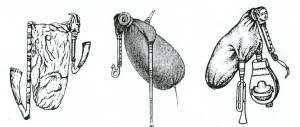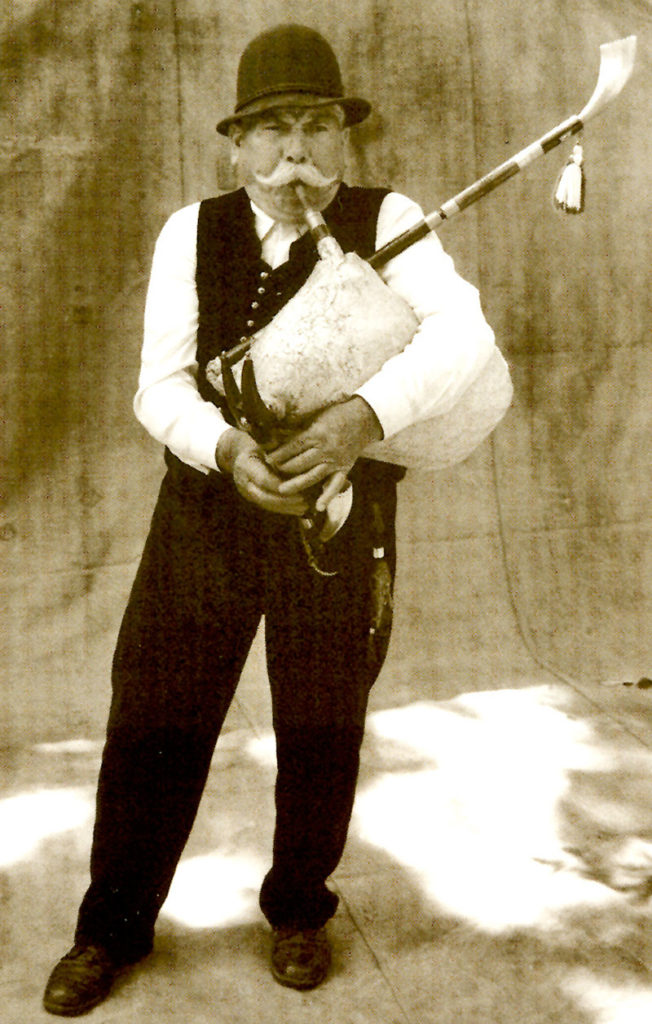BAGPIPE, BELLOWS PIPE (duda)
This ancient and significant instrument of the Hungarians has its origins in the Near East in antiquity. Up to the 16th century it was the military instrument of the hussars (cavalry), when it was replaced by the shawm (töröksíp). For centuries the bag piper was extremely popular and appreciated by every level of society. In the 19th century, a single bag piper was often the ‘whole orchestra’ at weddings, carnivals and dances. Herdsmen bagpipers gave homage to the Christ-child in Nativity plays. It was also used for army recruiting (see cover). By the 20th century bagpipe music almost disappeared.
The Hungarian type of pipe has three blow-pipes: the melody-pipe, the assistant (contra) pipe and the drone or bass-pipe. The melody (chanter) and the contra-pipe are connected by a double pipe-stem, and inserted into the bagpipe head, usually goat or ram heads; on the Great Plain maiden and mustached man heads can also be found. The air is blown into the leather bag through the mouthpiece (blower) made of reed or elder. The bag is made out of a single goat, sheep or dog skin with the fur on the inside. The drone stands separately. The Hungarian bagpipe produces three notes at the same time, two through the double pipe, and one through the drone. The piper never played together with another piper, probably be cause it was almost impossible to tune up the pipes.



